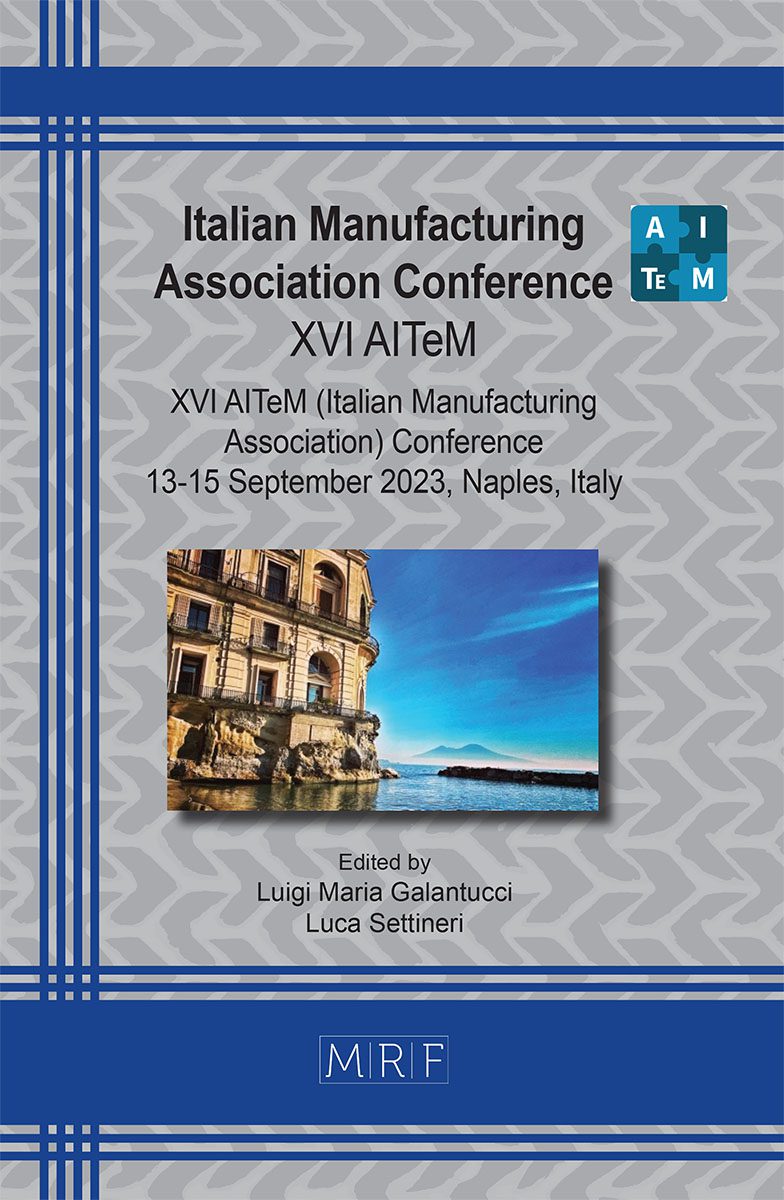Static indentation properties of basalt fiber reinforced composites for naval applications
Chiara Borsellino, Mohamed Chairi, Jalal El Bahaoui, Federica Favaloro, Fabia Galantini, Guido Di Bella
download PDFAbstract. In recent years, the attention toward the use of basalt fiber reinforced composite in shipbuilding is significantly grown. Basalt is a green and environmentally friendly high-tech fiber made without environmental pollution. Among the natural fibers that can be used as reinforcement, it represents one of the most interesting due to its excellent mechanical properties. The goal of this research is to mechanically characterize some laminates used by Intermarine to make several structural or non-structural parts (i.e., hulls, deck), where the glass fibers are substituted with basalt ones at varying the manufacturing process (i.e., hand-lay-up and vacuum infusion). Specifically, static indentation tests were performed with different pin diameters (i.e., 17 mm, and 20 mm) and speeds (i.e., 1.25 mm/min, and 2.50 mm/min) to study the difference between glass and basalt in terms of resistance and failure modes.
Keywords
Delamination and Debonding, Naval, Composites
Published online 9/5/2023, 9 pages
Copyright © 2023 by the author(s)
Published under license by Materials Research Forum LLC., Millersville PA, USA
Citation: Chiara Borsellino, Mohamed Chairi, Jalal El Bahaoui, Federica Favaloro, Fabia Galantini, Guido Di Bella, Static indentation properties of basalt fiber reinforced composites for naval applications, Materials Research Proceedings, Vol. 35, pp 350-358, 2023
DOI: https://doi.org/10.21741/9781644902714-42
The article was published as article 42 of the book Italian Manufacturing Association Conference
![]() Content from this work may be used under the terms of the Creative Commons Attribution 3.0 license. Any further distribution of this work must maintain attribution to the author(s) and the title of the work, journal citation and DOI.
Content from this work may be used under the terms of the Creative Commons Attribution 3.0 license. Any further distribution of this work must maintain attribution to the author(s) and the title of the work, journal citation and DOI.
References
[1] I. Zivkovic, C. Fragassa, A. Pavlovic, T. Brugo, Influence of moisture absorption on the impact properties of flax, basalt and hybrid flax/basalt fiber reinforced green composites, Compos Part B 111 (2017) 148-164. https://doi.org/10.1016/j.compositesb.2016.12.018
[2] Information on https://cordis.europa.eu/article/id/422007-major-step-towards-sustainable-and-efficient-ship-construction.
[3] K. Van de Velde, P. Kiekens, L. Van Langenhove, Basalt fibres as reinforcement for composites, In: Proceedings of 10th International Conference on Composites / Nano Engineering ICCE/10, International Community for Composites Engineering and College of Engineering, University of New Orleans (2003).
[4] Z. Li, J. Ma, H. Ma, X. Xu, Properties and Applications of Basalt Fiber and Its Composites. In IOP Conference Series: Earth and Environmental Science, IOP Publishing: Banda Aceh, Indonesia, 186 (2018). https://doi.org/10.1088/1755-1315/186/2/012052
[5] V. Dhand, G. Mittal, K.Y. Rhee, S-J. Park, D. Hui. A short review on basalt fiber reinforced polymer composites, Comp B 73 (2015) 166-180. https://doi.org/10.1016/j.compositesb.2014.12.011
[6] C. Jiang, K. Fan, F. Wu, D. Chen, Experimental study on the mechanical properties and microstructure of chopped basalt fibre reinforced concrete, Mater Des, 58 (2014) 187-193. https://doi.org/10.1016/j.matdes.2014.01.056
[7] C.H. Jiang, T.J. McCarthy, D. Chen, Q.Q. Dong, Influence of basalt fibre on performance of cement mortar, Key Eng Mater, 426-427 (2010) 93-96. https://doi.org/10.4028/www.scientific.net/KEM.426-427.93
[8] D.P. Dias, C. Thaumaturgo, Fracture toughness of geopolymeric concretes reinforced with basalt fibres, Cem Concr Compos, 27 (2005) 49-54. https://doi.org/10.1016/j.cemconcomp.2004.02.044
[9] V. Fiore, T. Scalici, G. Di Bella, A. Valenza, A review on basalt fibre and its composites, Compos Part B, 74 (2015) 74-94. https://doi.org/10.1016/j.compositesb.2014.12.034
[10] V. Fiore, G. Di Bella, A. Valenza, Glass-basalt/epoxy hybrid composites for marine applications, Mater Des 32 (2011) 2091-2099. https://doi.org/10.1016/j.matdes.2010.11.043
[11] P. Davies, W. Verbouwe, Evaluation of Basalt Fibre Composites for Marine Applications, Appl Compos Mater 25 (2018) 299-308. https://doi.org/10.1007/s10443-017-9619-3
[12] L.S. Sutherland, C. Guedes Soares, Contact indentation of marine composites, Comp Struct 70 (2005) 287-294. https://doi.org/10.1016/j.compstruct.2004.08.035
[13] L.S. Sutherland, A review of impact testing on marine composite materials: Part I – Marine impacts on marine composites, Comp Struct 188 (2018) 197-208. https://doi.org/10.1016/j.compstruct.2017.12.073
[14] L.S. Sutherland, C. Guedes Soares, Impact characterisation of low fibre-volume glass reinforced polyester circular laminated plates, Int J Impact Eng 31 (2005) 1-23 https://doi.org/10.1016/j.ijimpeng.2003.11.006
[15] C. Borsellino, L. Calabrese, G. Di Bella, Windsurf board sandwich panels under static indentation, Appl Compos Mater 15 (2008) 75- 86. https://doi.org/10.1007/s10443-008-9058-2

































